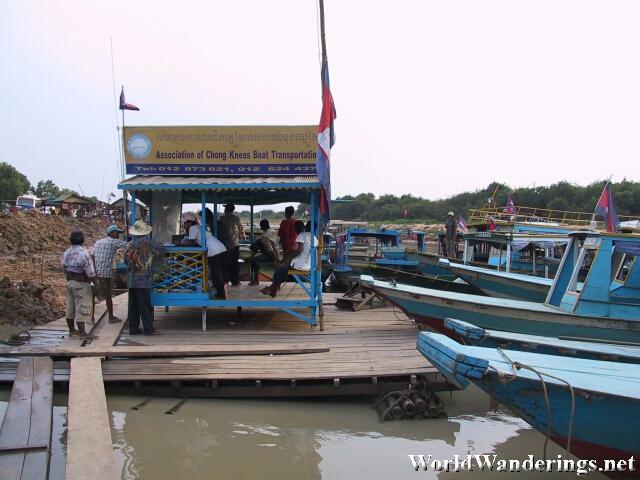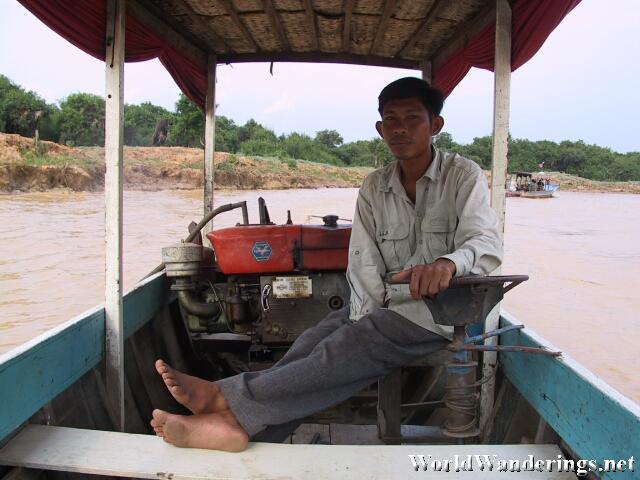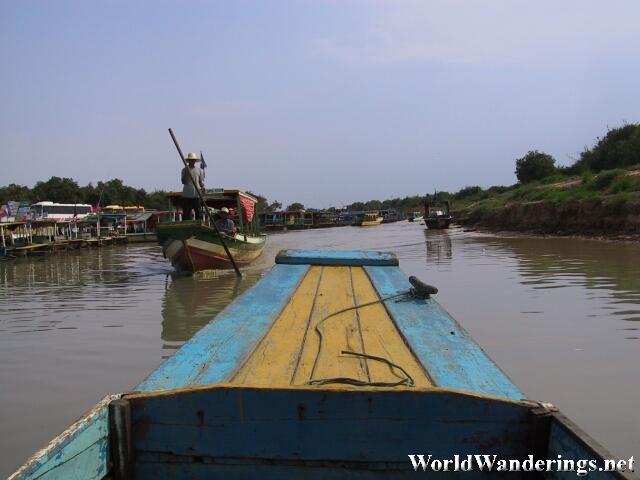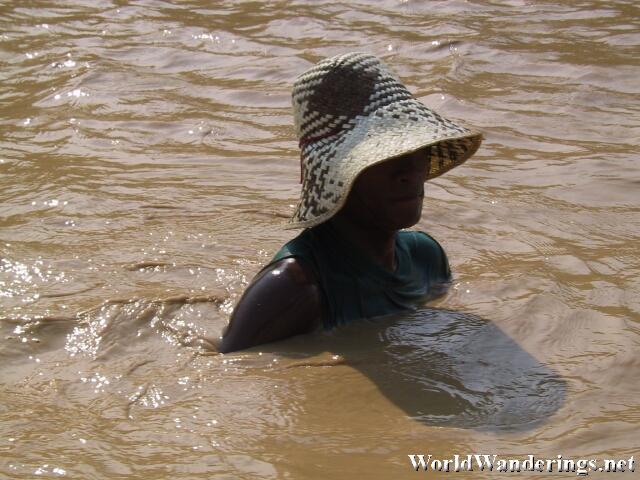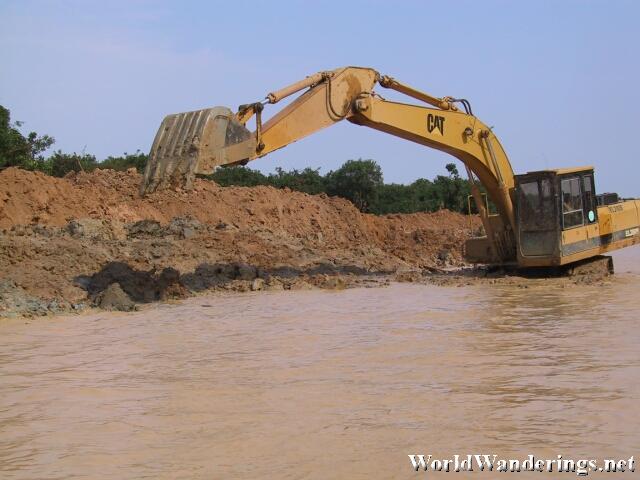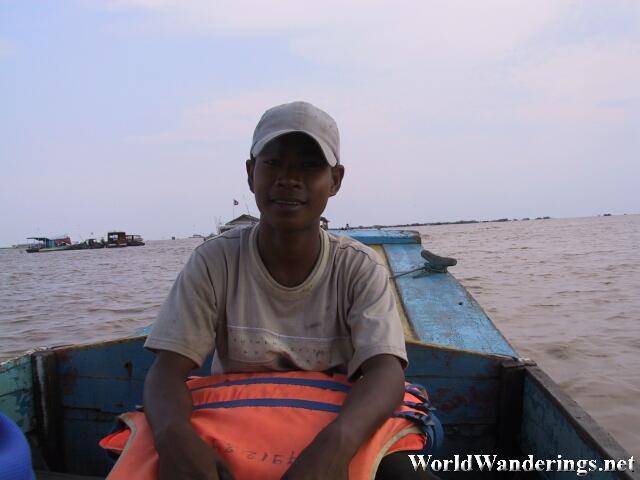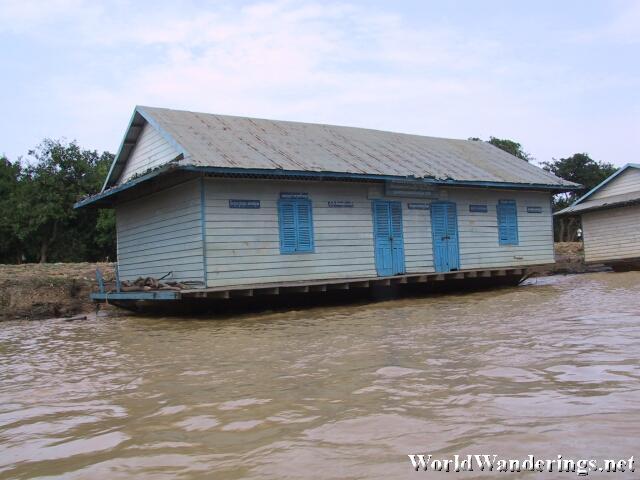At the Golden Temple Villa, we planning our next course of action. It was still early afternoon and we were debating on which temple to start with. Our hotel provides transportation to the tourists spots of Siem Reap, and they suggested that we go visit the floating village nearby. It actually sounded like a lame tourist attraction but we went ahead with it anyway, since we decided to visit Angkor Wat at sunrise.
We loaded up on our tuk-tuk and went to towards the floating village. It was quite a distance from the center of Siem Reap, we had to pass by a check point where we will be paying the entrance fee for visiting the village. After this point the road turned bad, really bad with dust flying all over the place. The houses on the roadside became noticeably shabbier and shabbier. Some of them are only huts. It was then that the extreme poverty of Cambodia hit me. Their houses were really in terrible conditions and it is doubtful that they have access to clean water other than the “clean” water from the lake.
At the end of the road, we reached the pier to visit the floating village. There was a small hut to pay for the boat and they led us to our boat. The pier was along the Siem Reap river and is bursting with boats of all sizes. However, most of the boats are made of wood. After crossing several boats, we got to our humble boat. It was a small wooden boat built for only a handful of passengers. I kind of envied the other boats since they even have upper floors for the tourists. Anyway, our boat seems to work anyway, and our boatman with his son set off to cruise the Tonle Sap lake. Our boat, while it was powered by a motor, it doesn’t have any outriggers that will stabilize the boat, so the slightest wave will send our boat rocking. There were several points that our boat meet a much bigger boat which would cause our boat to rock uncomfortably. There was a point that we felt the boat would capsize, which it didn’t.
The name of the floating village is Chong Kneas, and it is a village on the huge Tonlé Sap which is Southeast Asia’s largest freshwater lake. It feeds off the mighty Mekong River and ends at Vietnam. You can say the the Tonle Sap lake was the birth place of Southeast Asian civilization as the mighty Khmer empire was based here. The Tonlé Sap is unique firstly because the flow of the water changes directions twice a year, and secondly, the size of the lake changes dramatically over the course of the year. At it’s full size during the Cambodian rainy season, it can be as much as five times big as its normal size. During this time, the lake teems with huge amount of fish making the Tonlé Sap one of the most productive inland fisheries in the world.
It was little surprise that a village was set up here on the shores of the Tonlé Sap. But how do you live with a lake the increases in depth from one meter to nine meters? Simple, you float on top of the lake. This explains why there are no permanent structures along the lake. This would also explain why the houses so far away from the lake shore are built on very high stilts. Apparently they are still on the floodplain, when the rainy season comes, the waters of the lake come right at them. While I think this is absolutely fascinating, I feel for the locals since there doesn’t seem to be any permanence in the living conditions.
To cope with the extreme variability of the lake size, the village had to build their houses on the water itself – without stilts. So it was literally a floating village. Along the way to the lake, we saw people going about their daily business, students walking back from the school. Fishermen fishing on the river itself. There were also a lot of dredging equipment desperately trying to deepen the river. Looking at the color of the water, I can’t help but wonder if how heavily silted the Tonlé Sap is. With all that sediment flowing into the lake won’t it be a matter of time before the lake fills up? Already, the river seem to be very shallow with the fishermen able to cross the river on foot.
Then we were there, the Siem Reap river opens up to reveal a vast inland sea. This is the Tonlé Sap. The birthplace of the Khmer Empire. From our boat it was impossible to see the opposite shore. It was that vast. On the horizon, you can see several clusters of houses on the lake. To our left we passed by several houses all floating on the water. There was even a chain of floating school buildings, complete with basketball gym. I can’t imagine being able to play a decent game of basketball on that gym, since the ring will be constantly moving from the waves of the lake. Amusingly there was a police station too. I assume that each house will have their own small boat to be able to go to land.
While passing by these houses, I could see how the villagers go about their business. Some of the houses didn’t have any walls so you can set what they are doing. Surprisingly, they have TV, I assume this is all battery powered since I see no way they would be able to wire the village up with electricity. They were all seated on the floor going about their business. I saw someone cleaning their kitchen utensils on the lake waters itself. It was kind of disgusting to think of using something washed from the lake waters but this is the reality that these villagers deal with everyday.
[xmlgm {http://www.worldwanderings.net/kml/ChongKneasFloatingVillage.kmz}]
